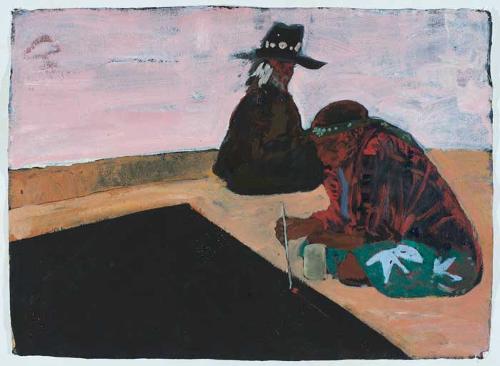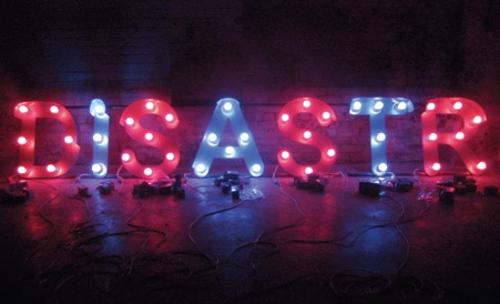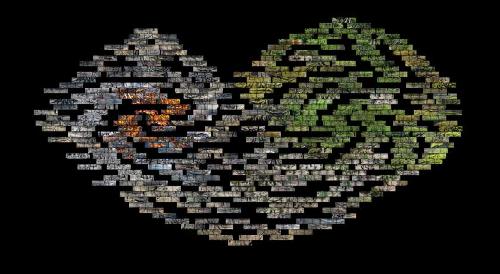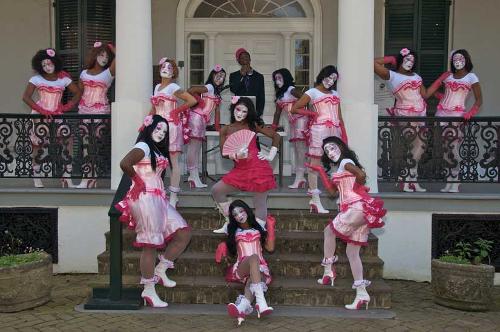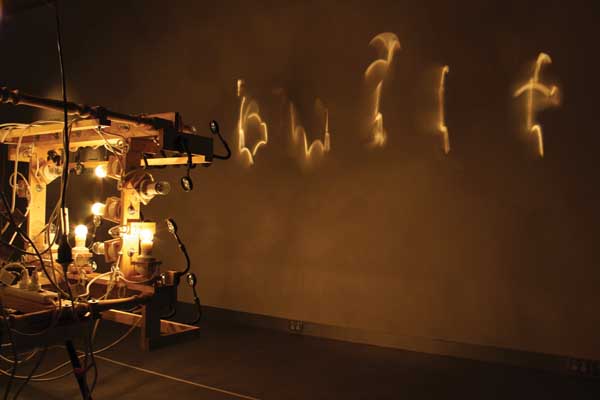
In the bad old days we all read and were taught from art history books in which quality in art was measured by how quickly a revolutionary art movement was mediated to Australia and victor's laurels were placed upon the brow of (usually) him who was responsible for bringing certain innovations to Australia. ACMI’s Ian Burns exhibition could easily have greatness thrust upon it via such a teleology, given the rapidly growing profile of the artist and his roster of major international exhibitions. Conversely it has playfulness, insouciance and an attachment to narrative and popular culture that exposes the old pomposity of the modernist imperium.
This informative and dense selection of works by an artist who is rapidly gaining attention within and outside Australia consists of a series of 3D sculptural constructions that engagingly seem dorky, ungainly and Heath Robinson-esque. At random moments, loops of footage are projected onto the gallery walls. These loops evoke visual clichés of Hollywood movies, especially the road movie and its sense of light, space and movement with its profound Zen love of the brief moment in transit. There is a deep poetic resonance when we think that we almost know, or ought to know, the looping clip or something more or less like it. The brevity of the riffs adds to the sense of a subliminal familiarity with the image or something that looked and unfolded in very much the same manner. Atmospheric fantasy and otherworldliness - sort of Easy Rider meets the Pre-Raphaelites – is layered upon the exhibition by the unpredictability of the timing. Yet that which seems wayward and casual – with the visible signs of an arte povera, miscellaneous repurposed items, a proliferation of messy looping wires and visible, archaic, audible and cheap electronic wiring and fixtures, is conversely highly sophisticated and complex enough to be able to spin out the illusion. Only after spending some time in the gallery do you realise that the projections are not clips from iconic films, but are generated before our eyes by the kinetic sculptures themselves. Each sculpture incorporates a small camera that is pointed at certain mobile elements of the assemblage that we had assumed were merely cute tricks of bringing movement to found objects. The supposed movie displayed on the gallery walls is the result of lighting and perspectival tricks facilitated by the design and construction of the sculptures. At once we are confronted with an intertextuality of the history of illusionism and cinematic special effects, a formidable skill base to devise and roll out the sculptures, and a genial, antic spirit that exorcizes the dour ghosts of modernism. Rarely is the quintessential Australian world of the men’s shed or the car on blocks in the front yard so insouciant and appealing
In this dense but plausible confluence of a number of popular metaphors, Ian Burns revisits multiple familiar and current concerns of art practice in a fresh manner that takes them out of the realms of cliché. Burns’ artworks are informed by the current stresses upon craft and handmaking within fine art, upon the material object and thinking though materials, and upon lateral thinking and repurposing of materials. Repurposing also focusses upon sustainability in design and acknowledging the finiteness of resources. Here the found object does not necessarily express a surrealistic happenstance, but indicates a willingness to work without excess. The artist accepts and acknowledges narrative both as an indication of his relationship to cinema and his moving beyond modernist formalism
Particularly effective throughout the whole exhibition is the interplay between hand and technology. Virtual effects are achieved through very physical and direct means and often with disparate materials, yet these very crafted and direct constructions are animated by means of complex circuitry and switching. This switching animates certain artworks and also enables the interplay between tangible and illusionary. The presence of elements of entertainment culture within the technological also reiterates the newness of Burns’ sculptures via the present day fascination with theatricality, illusion and hybridity, and the drawing of truth from pretences. Metaphor and reality and the generation of reality and fantasy crunch together and become unified. The exhibition questions the nature of cliché and representation, especially the love of the trope-ic stereotype in popular cinema, yet makes plausible contemporary art from the illusionistic techniques of early cinema.


